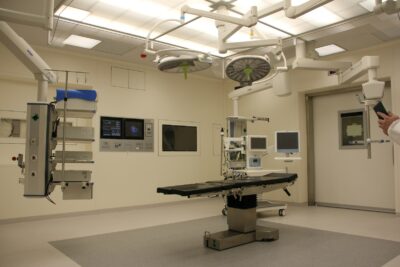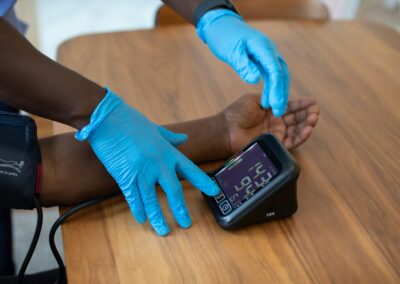Transforming Surgical Precision with Digital Twins
Enhancing Surgical Planning with Detailed Virtual Models
The use of digital twins in personalized surgical planning marks a significant advancement in medical technology, offering a new level of precision and customization in surgical procedures. Digital twins are virtual replicas of a patient’s anatomical structure created from comprehensive imaging and diagnostic data. These models allow surgeons to simulate and plan complex procedures with a high degree of accuracy, ensuring that each step is tailored to the individual patient’s unique anatomy.
By integrating data from various sources, including MRI and CT scans, digital twins provide an intricate and dynamic representation of a patient’s body. This detailed virtual model allows surgeons to explore different surgical approaches, anticipate potential complications, and optimize techniques before making any incisions. For regions like Saudi Arabia and the UAE, where advancements in healthcare technology are a priority, this level of precision supports the development of cutting-edge medical practices and enhances overall patient outcomes.
Furthermore, digital twins facilitate better preoperative planning by allowing surgeons to rehearse procedures virtually. This rehearsal process helps in refining surgical strategies and identifying the most effective approaches, ultimately reducing the risk of errors and improving surgical success rates. In cities like Riyadh and Dubai, where there is a strong emphasis on integrating modern technology into healthcare, digital twins are becoming a crucial tool for advancing surgical excellence.
Improving Outcomes with Personalized Surgical Strategies
One of the most profound impacts of digital twins in personalized surgical planning is the ability to create highly personalized surgical strategies. Traditional surgical planning often relies on generalized techniques that may not account for the specific variations in individual patient anatomy. Digital twins, however, offer a tailored approach by providing a precise virtual representation of each patient’s unique anatomical features.
This level of personalization ensures that surgical plans are optimized for each patient, taking into account their specific conditions and anatomical differences. Surgeons can experiment with various techniques and tools within the digital twin model, selecting the most effective approach for each patient. This personalized strategy not only enhances surgical precision but also minimizes the risk of complications and improves recovery times.
In the context of healthcare innovation in Saudi Arabia and the UAE, adopting digital twins for surgical planning aligns with the region’s commitment to advancing medical technology. By leveraging these virtual models, healthcare providers can deliver more effective and individualized care, contributing to better patient outcomes and overall healthcare excellence.
Overcoming Challenges and Embracing Future Opportunities
While the benefits of digital twins in personalized surgical planning are substantial, there are challenges that need to be addressed to fully realize their potential. These challenges include the need for high-quality imaging data, integration with existing medical systems, and ensuring data security and privacy.
High-quality imaging is crucial for creating accurate digital twins, and variations in imaging techniques can affect the reliability of these virtual models. Additionally, integrating digital twins with existing medical systems and workflows requires seamless interoperability to maximize their effectiveness. Data security and privacy are also critical considerations, as patient information must be protected in compliance with regulatory standards.
Despite these challenges, the future of digital twins in surgical planning is promising. Continued advancements in imaging technology, data integration, and cybersecurity will enhance the capabilities and reliability of digital twins. For business executives and healthcare leaders in Saudi Arabia and the UAE, embracing these innovations will be key to staying at the forefront of medical technology and improving patient care.
Conclusion: Leading the Way in Personalized Healthcare
In conclusion, digital twins in personalized surgical planning represent a groundbreaking advancement in healthcare technology, offering unprecedented precision and customization in surgical procedures. By providing detailed virtual representations of patient anatomy, digital twins enable surgeons to plan and execute procedures with a higher degree of accuracy and personalization.
For regions like Saudi Arabia and the UAE, where there is a strong focus on integrating modern technology into healthcare, the adoption of digital twins is a strategic move towards enhancing surgical practices and improving patient outcomes. As the technology continues to evolve, digital twins will play an increasingly important role in personalized medicine, driving innovation and excellence in healthcare delivery.
By overcoming existing challenges and embracing future opportunities, healthcare providers can leverage digital twins to lead the way in personalized surgical planning and deliver superior patient care.
—
#DigitalTwinsInPersonalizedSurgicalPlanning, #PersonalizedMedicine, #HealthcareInnovation, #VirtualRepresentation, #SaudiArabia, #UAE, #Riyadh, #Dubai, #ArtificialIntelligence, #ModernTechnology, #BusinessSuccess, #Leadership, #ProjectManagement























